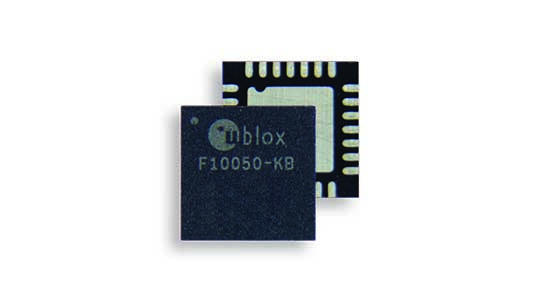Thalwil, Switzerland – u-blox, a global provider of leading positioning and wireless communication technologies and services, has announced F10, the company’s first dual-band GNSS (Global Navigation Satellite Systems) platform combining L1 and L5 bands to offer enhanced multipath resistance and meter-level positioning accuracy. The platform caters to urban mobility applications, such as aftermarket telematics and micromobility.
Applications that use GNSS receivers for accurate positioning are on the rise. Yet, current receivers do not fully perform in urban areas. Accurate and reliable positioning in dense urban environments, where buildings or tree foliage can reflect satellite signals, requires GNSS receivers to mitigate multipath effects. The L5 band’s resilience to these effects significantly improves positioning accuracy. Combined with the well-established L1 band, an L1/L5 dual-band GNSS receiver can deliver < 2 m positioning accuracy (CEP50), against about 4 m with the L1 band only. The u-blox team has conducted driving tests in several urban areas, confirming a significant improvement over GNSS L1 receivers.
The F10’s firmware algorithm prioritizes L5 band signals in weak signal environments, ensuring reliable positioning accuracy even when paired with small antennas. The platform is also equipped with protection-level technology that provides a real-time trustworthy positioning accuracy estimate.
When a cellular modem is extremely close to a GNSS receiver, it can interfere with the receiver’s reception. Some F10 module models (NEO-F10N, MAX-F10S, and MIA-F10Q) are equipped with a robust RF circuit that allows the GNSS and the cellular modem to operate without interference.
The u-blox F10 platform is pin-to-pin compatible with the previous u-blox M10 generation for easy migration. It also supports u-blox AssistNow, which offers real-time online A-GNSS service with global availability to reduce GNSS time-to-first-fix and power consumption.
The u-blox EVK-F101 evaluation kit will be available in April 2024.
* Source: GNSS Chip & Module Market Analysis













